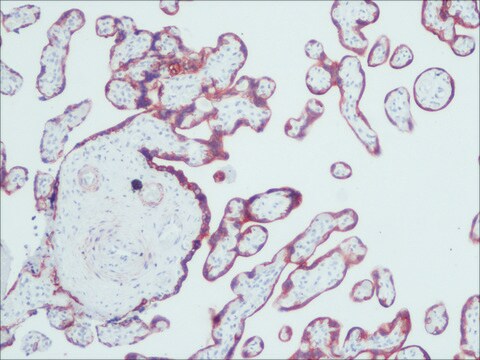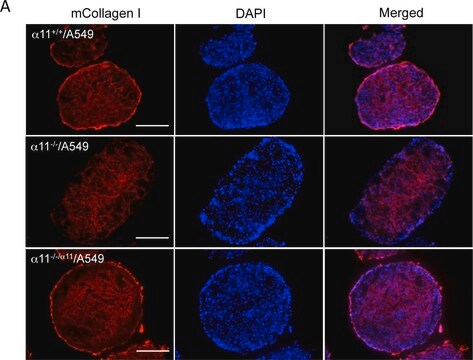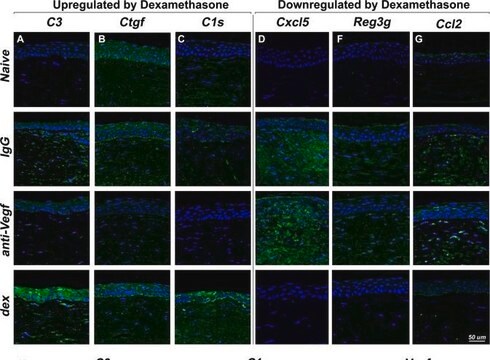M7898
Monoclonal Anti-Thy 1.1 antibody produced in mouse
clone TN-26, purified immunoglobulin, buffered aqueous solution
Synonym(s):
Anti-CD90, Anti-CDw90
Sign Into View Organizational & Contract Pricing
All Photos(1)
About This Item
Recommended Products
biological source
mouse
Quality Level
conjugate
unconjugated
antibody form
purified immunoglobulin
antibody product type
primary antibodies
clone
TN-26, monoclonal
form
buffered aqueous solution
species reactivity
mouse
technique(s)
complement-mediated cytotoxicity assay: suitable
indirect immunofluorescence: suitable
isotype
IgM
UniProt accession no.
shipped in
dry ice
storage temp.
−20°C
target post-translational modification
unmodified
Gene Information
mouse ... Thy1(21838)
General description
Monoclonal Anti-Thy 1.1 (mouse IgM isotype) is derived from the hybridoma produced by the fusion of mouse myeloma cells and splenocytes from an immunized mouse.
Thymus cell antigen 1 (Thy 1.1) is a glycosylphosphatidyl-anchored protein. It belongs to the of the immunoglobulin superfamily. Thy 1.1 is expressed in stem cells, T-cells and neurons.
Specificity
Recognizes Thy 1.1 bearing cells and is less than 5% cross-reactive with Thy 1.2 bearing cells. Titer is 1:20,000 as determined by in vitro cytotoxicity against AKR/J thymocytes.
Immunogen
thymocytes from AKR/J (Thy 1.1) mice.
Application
Monoclonal Anti-Thy 1.1 antibody produced in mouse has been used in immunopanning and immunofluorescence.
Biochem/physiol Actions
Studies have shown that mice lacking the protein thymus cell antigen 1 (Thy 1.1) have an increased number of fibroblasts. It suppresses proliferation and enhances apoptosis in dermal fibroblasts, thereby modulating cell growth. This is carried out by regulating the action of β3 integrin.
Physical form
Solution in 0.1 M phosphate buffered saline, pH 7.4, containing 15 mM sodium azide.
Disclaimer
Unless otherwise stated in our catalog or other company documentation accompanying the product(s), our products are intended for research use only and are not to be used for any other purpose, which includes but is not limited to, unauthorized commercial uses, in vitro diagnostic uses, ex vivo or in vivo therapeutic uses or any type of consumption or application to humans or animals.
Not finding the right product?
Try our Product Selector Tool.
Storage Class Code
10 - Combustible liquids
WGK
nwg
Flash Point(F)
Not applicable
Flash Point(C)
Not applicable
Choose from one of the most recent versions:
Already Own This Product?
Find documentation for the products that you have recently purchased in the Document Library.
Zhenghui Cheng et al.
BMC molecular and cell biology, 22(1), 21-21 (2021-04-09)
Schwann cells (SCs) play a crucial role in the repair of peripheral nerves. This is due to their ability to proliferate, migrate, and provide trophic support to axon regrowth. During peripheral nerve injury, SCs de-differentiate and reprogram to gain the
J A Cohen et al.
Journal of neuroscience research, 31(4), 622-634 (1992-04-01)
The neu gene, which encodes a putative tyrosine kinase growth factor receptor termed p185neu, was originally identified as a dominant transforming gene in neurogliomas and schwannomas induced by transplacental treatment of rat embryos with ethylnitrosourea. The present studies were undertaken
Wendy A Neveu et al.
American journal of physiology. Cell physiology, 309(9), C616-C626 (2015-09-04)
Idiopathic pulmonary fibrosis is a progressive lung disease that increases in incidence with age. We identified a profibrotic lung phenotype in aging mice characterized by an increase in the number of fibroblasts lacking the expression of thymocyte differentiation antigen 1
Yuqing Feng et al.
Molecular medicine (Cambridge, Mass.), 29(1), 9-9 (2023-01-19)
Retinal ganglion cells (RGCs) apoptosis is a vital manifestation of retinal ischemia/reperfusion (I/R) injury, yet the underlying mechanisms are not well understood. The contribution of long noncoding RNAs (lncRNAs) to this cellular process is currently being explored. Based on a
Glial-mediated neuroprotection: Evidence for the protective role of the NO-cGMP pathway via neuron-glial communication in the peripheral nervous system.
Thippeswamy T, et al.
Glia, 49(2), 197-210 (2005)
Our team of scientists has experience in all areas of research including Life Science, Material Science, Chemical Synthesis, Chromatography, Analytical and many others.
Contact Technical Service







